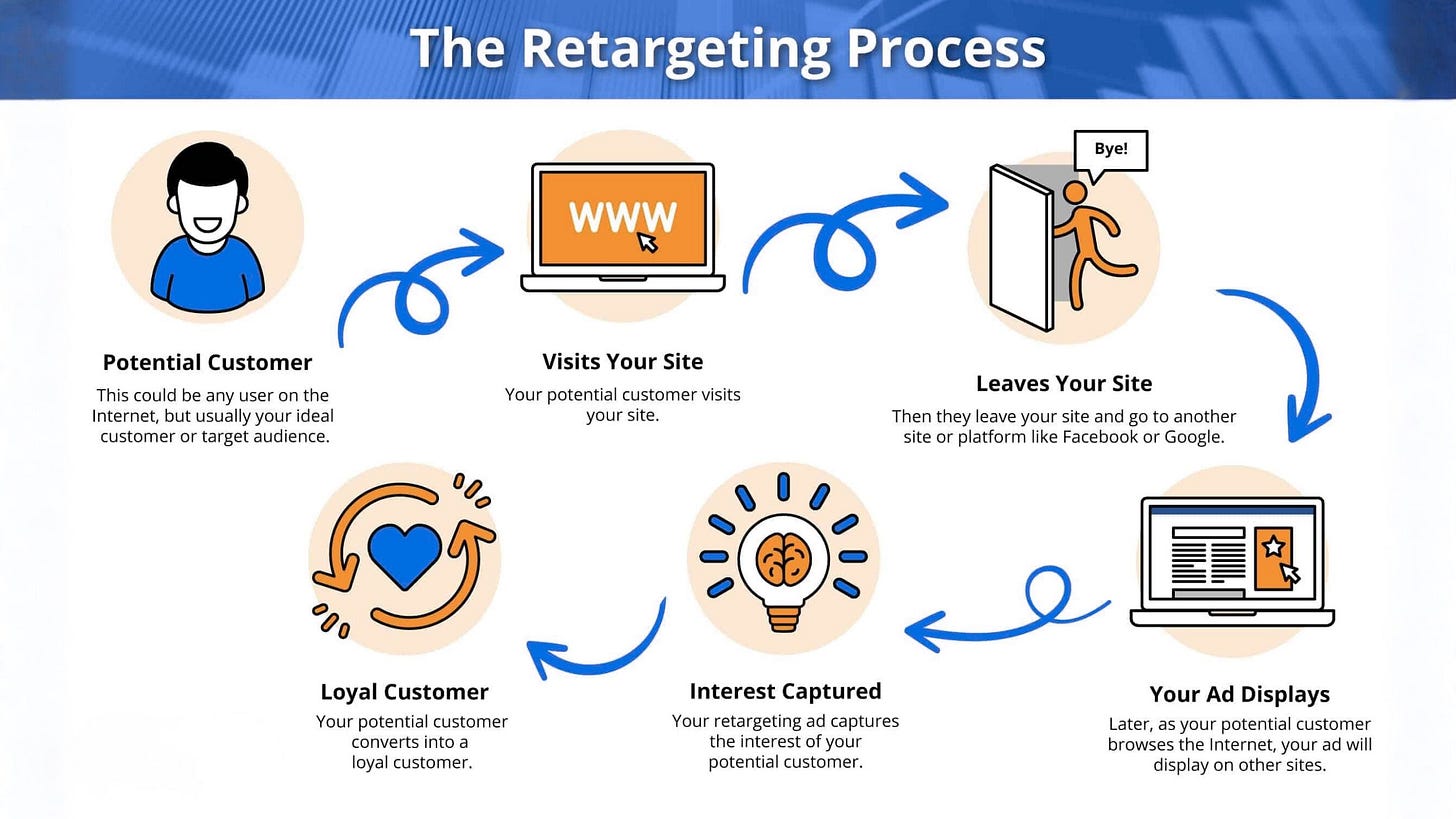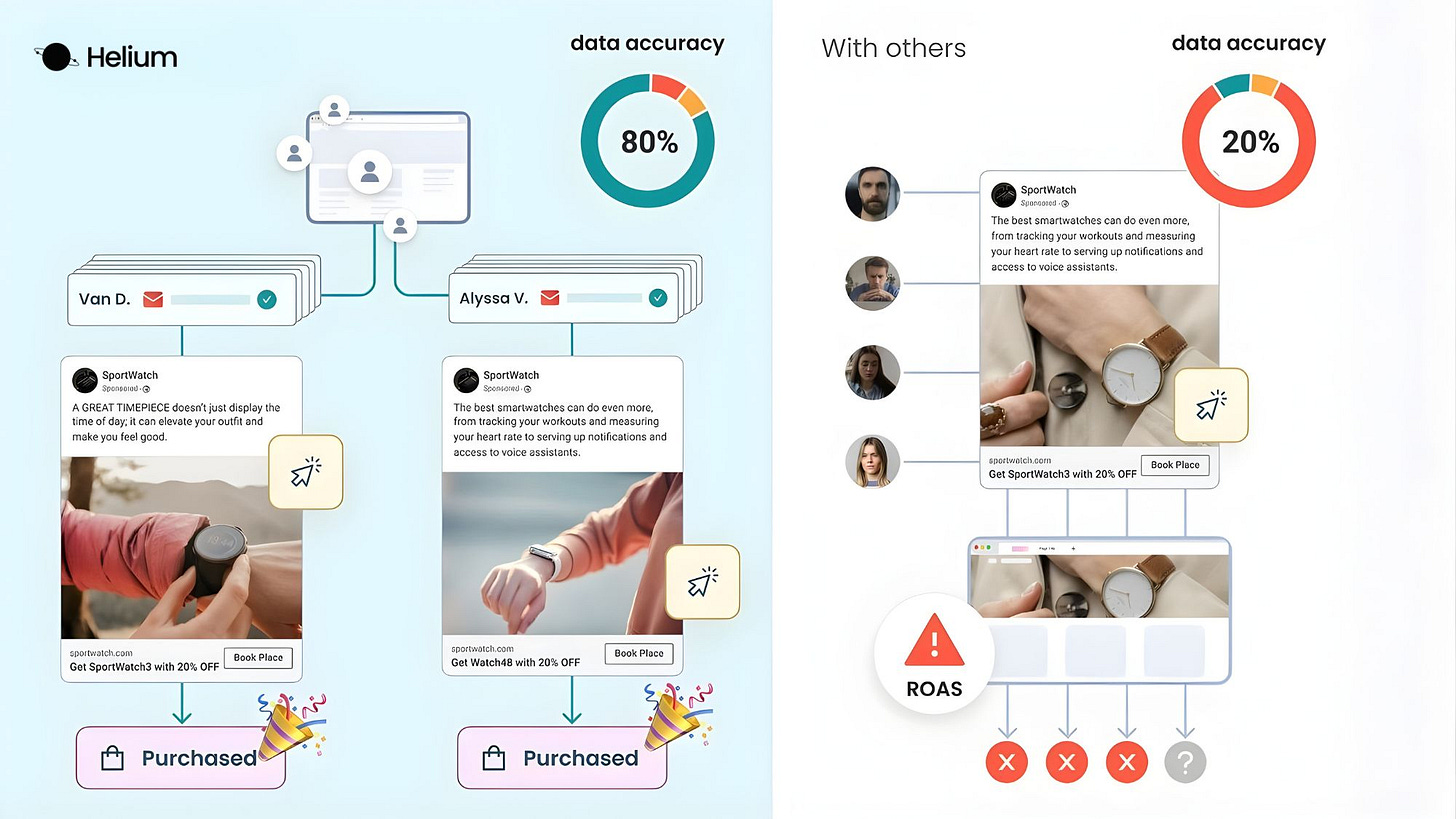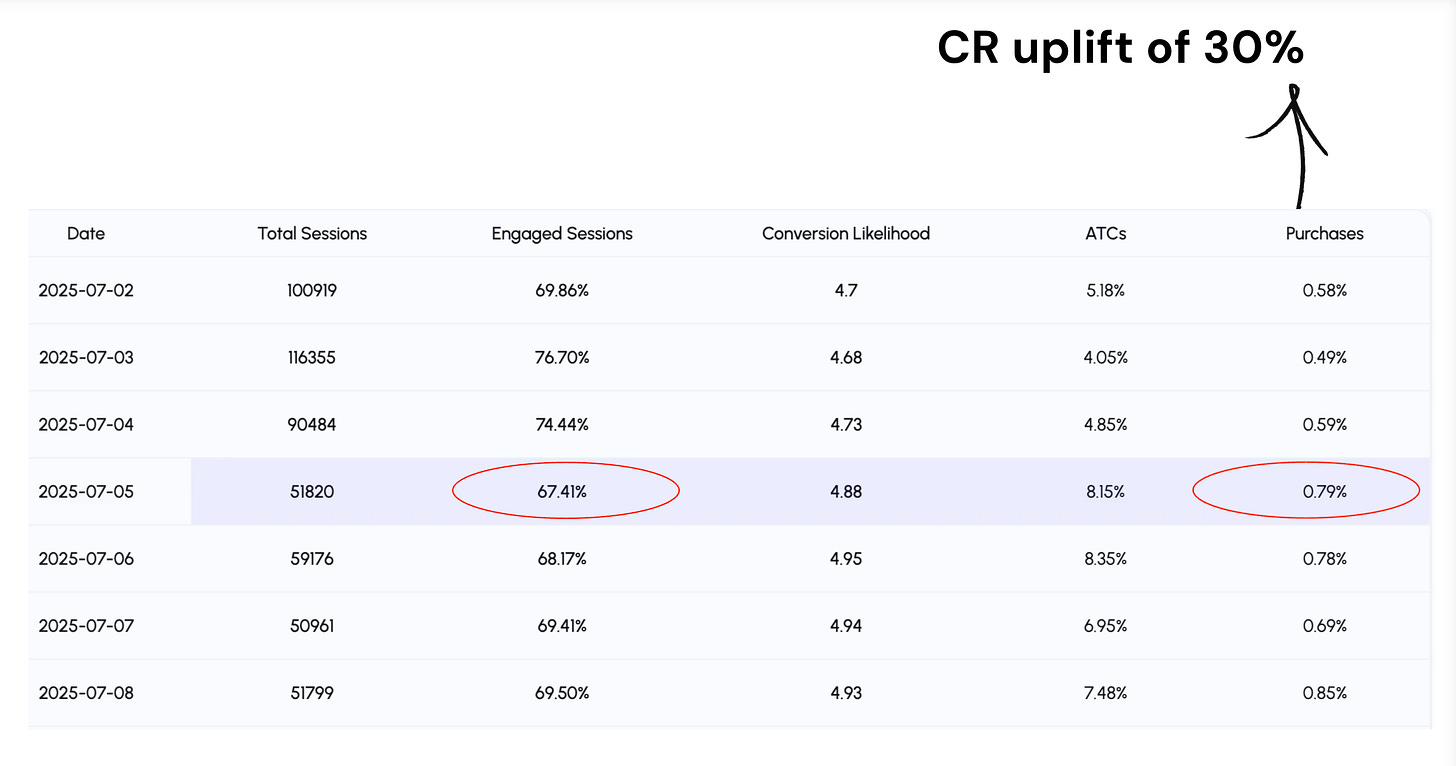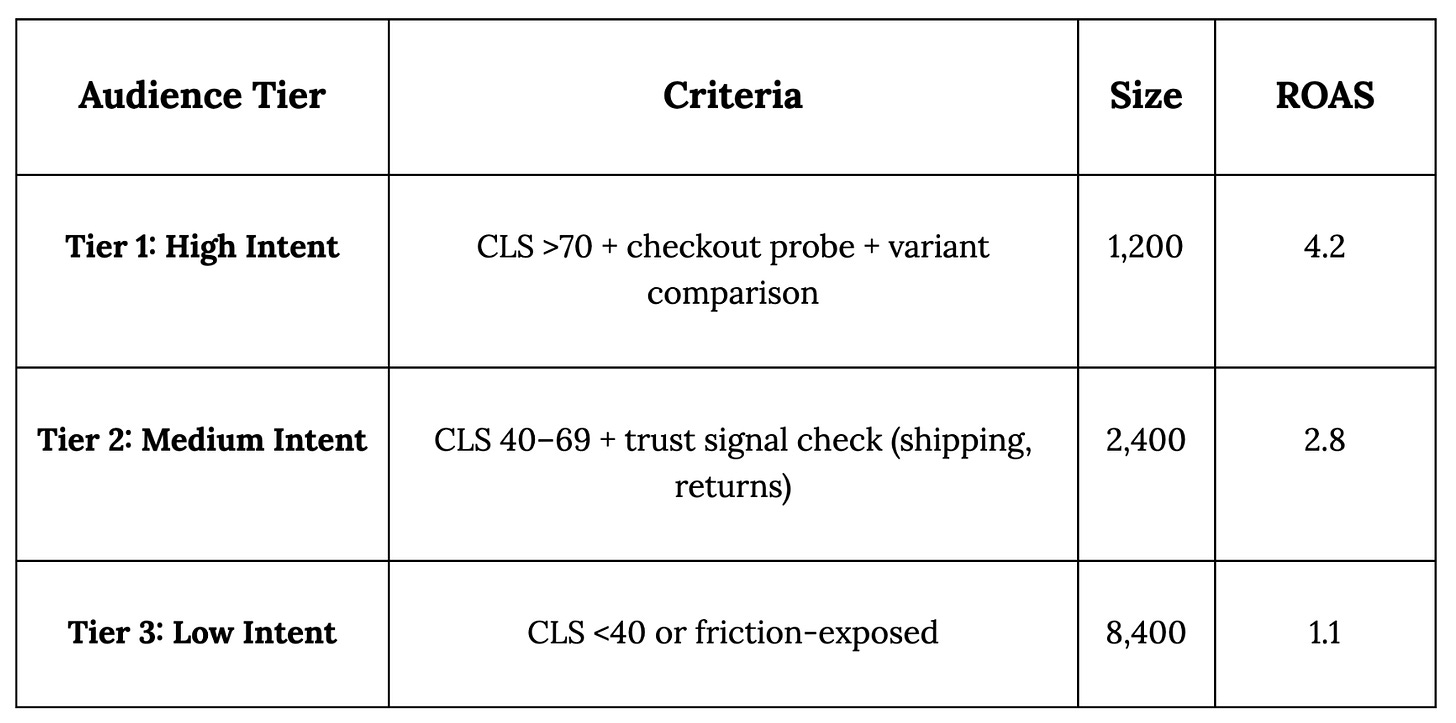Your Retargeting Audiences Are Destroying ROAS: The Session Intelligence Fix
Most ecommerce brands retarget low-quality sessions, inflating CPCs and tanking ROAS. Learn how session scoring stops ad waste before it hits your budget.
Introduction
41% of marketing budgets are wasted due to poor targeting【Statista 2023】
Retargeting lists built on cart views leads to inflated costs for low-intent shoppers
CACs have increased 222% over the past 8 years【Profitwell/Zuora 2023】
In 2025, every wasted impression directly cuts into margin → personalisation is now a performance channel, not a widget
Why Your Retargeting Audiences Are Bloated (And Expensive)
Most ecommerce brands build retargeting audiences like this:
Cart abandoners: Anyone who added a product (12,000 users)
Product viewers: Anyone who spent 10+ seconds on a PDP (28,000 users)
Site visitors: Anyone who landed on the homepage (45,000 users)
Sounds smart. Bigger audience = more conversions, right? Wrong. Here’s what actually happens when you retarget everyone:
Bot traffic inflates your audience
GA4 shows 12,000 “cart abandoners.” But 4,500 of them are bots, scrapers, or click fraud. They triggered your pixel, entered your retargeting pool, and cost you $9,450 in wasted impressions last month. They will never convert. Ever.
Low-intent sessions dilute your signal
A user spent 12 seconds on your PDP. Meta sees “engaged visitor.” But they were actually comparison shopping—they opened your product page in one tab and four competitor pages in others. They have zero purchase intent. Retargeting them costs $2.10 per click and converts at 0.3%.
Friction-exposed sessions poison the pool
A mobile user added your product to cart, but your checkout page took 8 seconds to load on their 3G connection. They bounced. Meta added them to your “high-intent” retargeting list. You just paid $1.85 to show them an ad for a product they couldn’t buy because your site failed them.
Do the math and you’re paying Meta to chase 8,820 people who will never convert. This is why your ROAS is tanking. Why Meta’s algorithm can’t fix this Meta’s algorithm optimizes for engagement, not conversion intent. It doesn’t know that:
User A is a bot
User B only buys during 30%-off sales
User C hit an out-of-stock page before abandoning cart
All Meta sees is “these users engaged with your site.” So it serves them impressions. And you pay for it. The only way to fix this is to filter your audience before it hits Meta’s system.
How Session Intelligence Protects ROAS
Not all sessions are created equal. Two people can visit your PDP, spend 15 seconds, and bounce—but one might be 10X more likely to convert than the other.
The difference? Intent signals.
How traditional analytics miss the point
GA4 tells you:
Session duration: 2m 14s
Pages viewed: 4
Bounce rate: 65%
But it doesn’t tell you:
Did they compare product variants or just scroll?
Did they check your shipping policy or return terms?
Did they hover over “Add to Cart” or ignore it completely?
Did they open your size guide or bounce at the first image?
The signals that actually matter
These micro-behaviors reveal intent. And intent determines who’s worth retargeting.
High-intent sessions exhibit patterns like:
Variant comparison: Switched between colors, sizes, or models
Trust validation: Checked shipping estimates, return policies, or reviews
Price confirmation: Viewed product multiple times across sessions or devices
Checkout probing: Clicked “Add to Cart,” viewed cart page, started checkout
Behavioral velocity: Moved through funnel quickly (decisive, not browsing)
Low-intent sessions look like:
Linear scrolling with no interaction
Single-page visit with immediate exit
Rapid tab-switching (comparison shopping)
Mobile visit with slow network (friction-exposed)
Geo mismatch (international visitor when you only ship domestically)
Session quality scoring assigns a 0–100 likelihood score to every visitor based on these signals:
A score of 75 means this session is 75% likely to convert if retargeted.
A score of 12 means you’re lighting money on fire.
Part 3: The Retargeting Audit Framework
Here’s how to find the waste in your current retargeting setup.
Step 1: Run a session quality audit
Check for bot traffic (20–40% of “engaged” audience)
Flag friction-exposed sessions (OOS, mobile latency, checkout errors)
Identify discount-dependent shoppers
Remove geo/device mismatches (e.g., Canada traffic when you only ship US)
Step 2: Score and segment
Instead of one massive “cart abandoner” audience, build tiered lists:
Old retargeting strategy: Spend equally across all 12,000 users.
New strategy: Allocate 70% of budget to Tier 1, 25% to Tier 2, suppress Tier 3 entirely.
Step 3: Sync to your ad platforms
Most brands can’t manually filter 50,000 sessions. This is where automation matters.
Pulse syncs scored audiences directly to Meta/Google:
High-intent sessions → Priority retargeting campaigns
Low-intent sessions → Suppressed from ad delivery
Friction-exposed sessions → Flagged for site fixes (don’t retarget until the issue is resolved)
Auto-refresh weekly so your audiences stay clean as new sessions roll in.
Stop Paying to Chase Bad Sessions
Here’s what most brands get wrong about retargeting: They think the problem is creative fatigue, audience saturation, or iOS privacy changes.
The real problem is they’re paying Meta to chase people who were never going to convert.
Bots. Window shoppers. Discount hunters. Friction-exposed sessions. Every wasted impression inflates your CPC, dilutes your signal, and tanks your ROAS.
The fix isn’t more budget. It’s better audience definition. Session intelligence lets you:
Filter out bot traffic before it costs you money
Score every session on conversion likelihood (not just “engagement”)
Suppress low-intent visitors from retargeting pools
Catch friction issues before they poison your audiences
The brands winning on paid media in 2025 aren’t spending more.
They’re spending smarter. See how session intelligence protects ROAS in 4 weeks. Book a demo!





